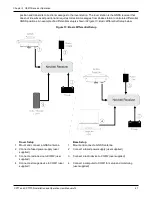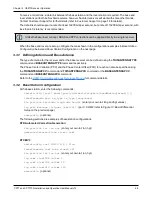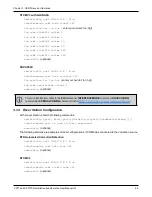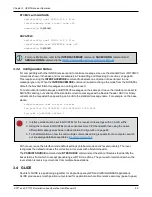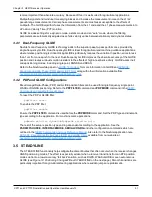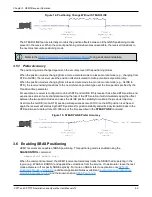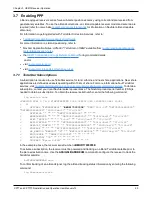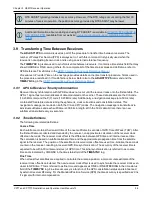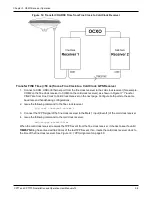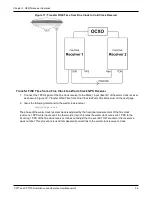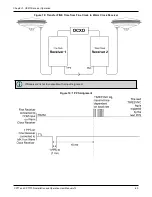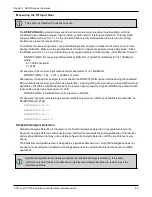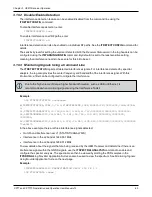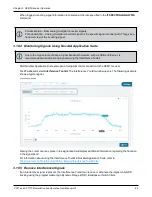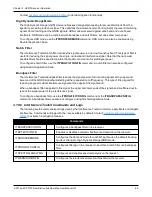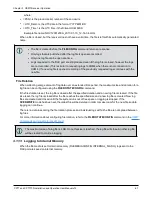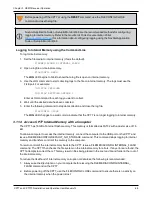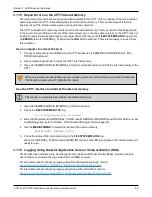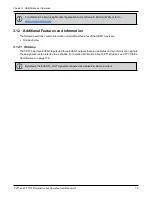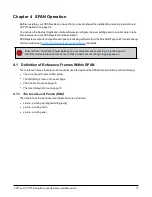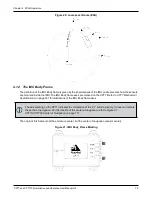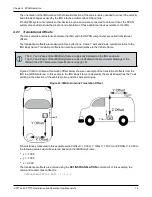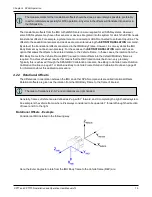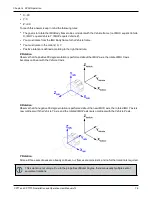
Chapter 3 OEM7 Receiver Operation
CPT7 and CPT7700 Installation and Operation User Manual v12
61
The examples shown in
Figure 16: Transfer COARSE Time from Fine Clock to Cold Clock Receiver
Figure 17: Transfer FINE Time from Fine Clock to Cold Clock Receiver
on page 59 and
Figure 18: Transfer FINE Time from Fine Clock to Warm Clock Receiver
on the previous page are for
the transfer of time. If a position is needed, the receiver must be tracking satellites and must have a
valid almanac.
3.10 Interference Toolkit
The Interference Toolkit (ITK) feature monitors, quantifies and removes interference sources to prevent
interference from impacting receiver performance.
Using the Interference Toolkit, you can monitor the Radio Frequency (RF) spectrum in a range of frequencies
around the GNSS signals that are being received by the OEM7 receiver. If an interference signal is detected,
information about the interference is output in the
ITDETECTSTATUS
log. More information about the
interference signal can be determined by plotting the information obtained.
Signals available are model dependent. A variety of mitigation techniques are available. Contact
novatel.com/contactus/sales-offices
to activate full mitigation features.
3.10.1 Monitoring GNSS Signals
By default, interference detection is enabled. Detection can be disabled/enabled as needed. See
on page 63 for instructions. Detected interference can be viewed and different
tracking modes with possible additional filters can be applied to mitigate the interference using NovAtel
Application Suite. Detected interference details can also be logged and analyzed using the command line
interface.
There are two types of interference detection available, Spectral Analysis Detection and Statistical Analysis
Detection.
NovAtel recommends using the default settings for Interference Toolkit whenever possible.
Spectral Analysis Detection
Spectral Analysis Detection is focused on in-band, near-band, and strong out-band interference detection.
OEM7 uses receiver gain calibration data that is stored in receiver memory at receiver start-up. The calibration
data is used to estimate the antenna gain before the receiver, as well as generate interference free spectrum
reference for spectral analysis detection. The receiver assumes that the receiver is in an interference free
environment during start-up and the antenna is connected to the receiver and powered up.
When using the Interference Toolkit, the receiver must be reset when the GNSS antenna is connected
or disconnected.
If a known interference source is present at the receiver start up, it's strongly recommended that users
enter the calibrated receiver input gain using the
RFINPUTGAIN
command.

